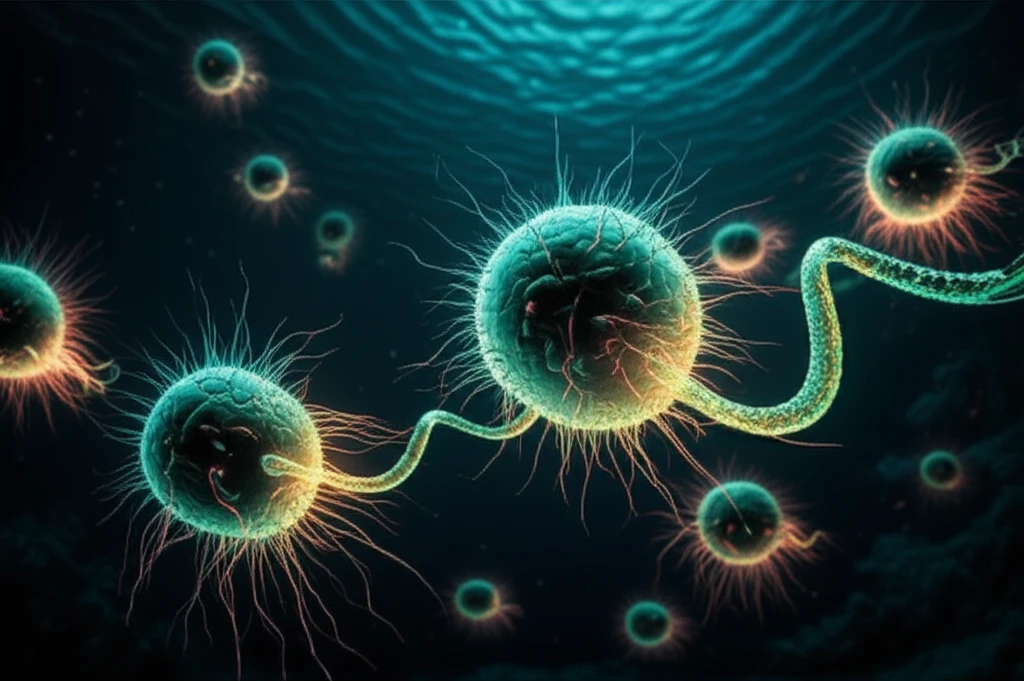
Viral Hack: How Ocean Viruses Help Algae Thrive
"Tiny ocean viruses can steal genes from their algal hosts to manipulate how they absorb nutrients, helping them survive in nutrient-poor waters. Here’s what that means for the ocean’s food web."
Phytoplankton, the microscopic algae drifting in our oceans, are the unsung heroes of the marine food web. Just like plants on land, they need nutrients to grow, especially nitrogen. But in many ocean areas, nitrogen is scarce, creating a constant struggle for survival.
Adding another layer to this complex picture are marine viruses, the most abundant biological entities in the ocean. Viruses infect and kill phytoplankton, a process that releases nutrients back into the water. But scientists are discovering that these viruses are more than just killers; they're also manipulators.
A groundbreaking study has uncovered that viruses can steal genes from their algal hosts, specifically genes that control how algae absorb nutrients. This means viruses can essentially rewrite the rules of nutrient uptake, giving infected algae a survival advantage. This article explores this fascinating discovery and its implications for understanding ocean ecosystems.
How Viruses 'Hack' Algal Nutrient Absorption

Researchers examined a virus called OtV6, which infects a small green alga named Ostreococcus tauri, a common type of phytoplankton. They discovered that OtV6 carries a gene for an ammonium transporter, a protein that helps algae absorb ammonium, a key form of nitrogen.
- Gene Theft: OtV6 acquired the ammonium transporter gene from its algal host.
- On-the-Job Training: The virus activates this gene during infection, meaning the infected algae produce the viral ammonium transporter.
- Nutrient Boost: This viral transporter changes how the algae take up nitrogen, increasing their ability to absorb different forms of nitrogen from the water.
What Does This Mean for the Ocean?
This discovery has major implications for how we understand ocean ecosystems. It shows that viruses aren't just agents of death but can also play a role in shaping the survival strategies of phytoplankton.
Here’s why it matters:
<ul><li><b>Nutrient Cycles:</b> Viruses can influence how nutrients like nitrogen are cycled through the ocean, affecting the entire food web.</li><li><b>Algal Blooms:</b> Viral manipulation could contribute to the formation and dynamics of algal blooms.</li><li><b>Evolution:</b> This highlights how viruses can act as vectors for horizontal gene transfer, driving the evolution of phytoplankton.</li></ul>
